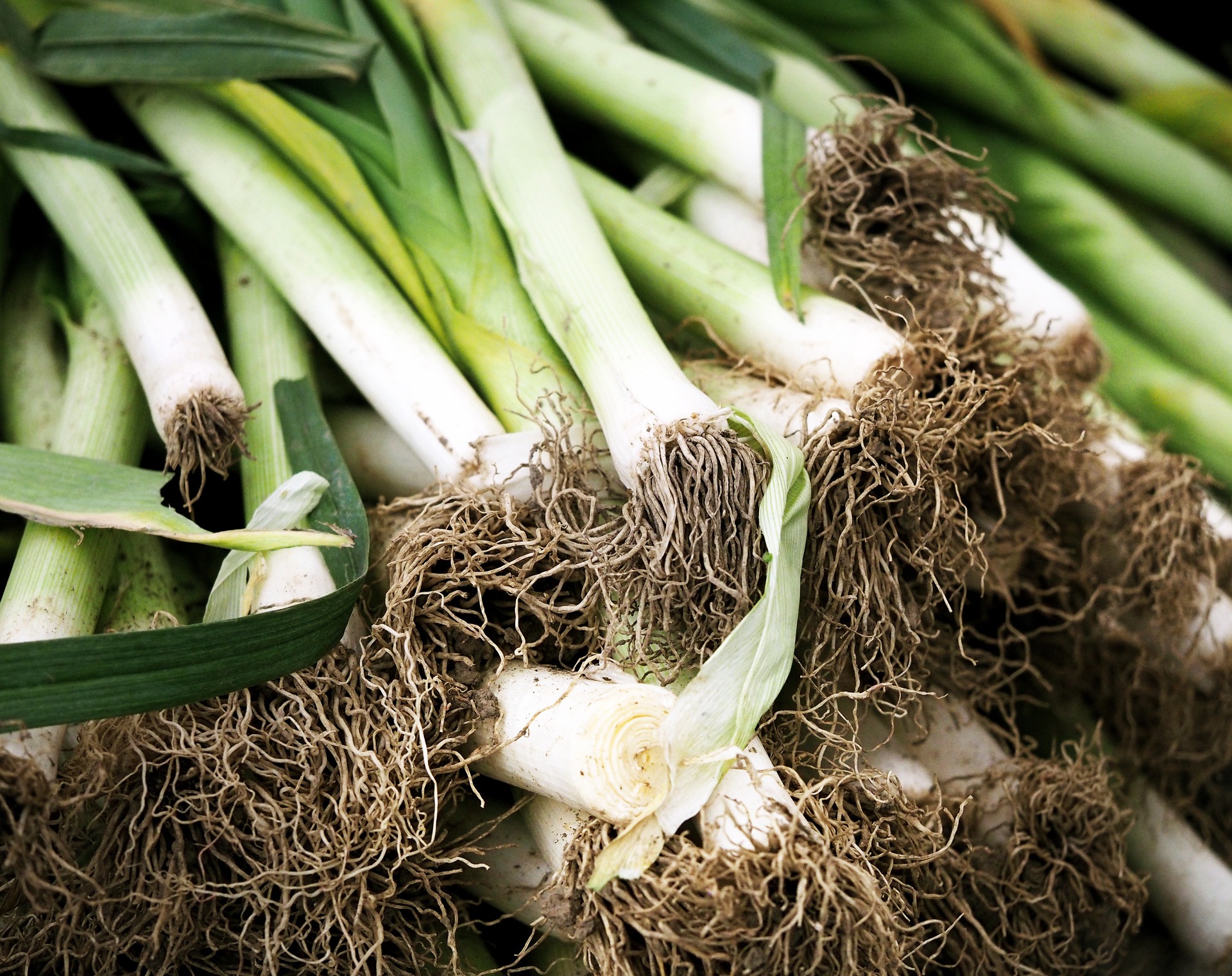Leeks are a bulb-less, mild allium that are easy to grow, but take a long time to mature from seed, 100 or so days in fact. With that in mind, leeks are one of the first seeds to start in winter, helping hinder the winter blues. The seeds can be germinated then nurtured through their early stages on a sunny windowsill and require a relatively small space to get going.
To start the seeds, prepare a seed bed of potting soil, garden soil, or compost (or a mix of all). Fill a planting tray (or even re-use containers such as mushroom boxes or milk jugs cut in half) with soil at least 6 inches deep. Scatter the seeds on the soil evenly or space them 1 inch apart if you are a perfectionist. Lightly cover the seeds with soil and water gently. Leeks germinate best at 60-70 degrees, and take up to two weeks to sprout.
Leeks are different from other onions in that they are grown for the white “blanched” bottoms. This does not happen naturally on it’s own, but is a forced condition that occurs from depriving a large part of the leek from sunlight. To grow leeks with nice long white bottoms, you have to plant and cultivate them in a special way. When the soil can be worked in the spring, you can set your leeks out into the ground. Dig a narrow trench 6 inches deep and drop in a baby leek every 8 or so inches. When you water them in for the first time the soil will wash into the trench around the tiny roots. As they grow, fill in the trench little by little. Once the trench is full, begin hilling up or building up soil around the base of the leeks. This process will keep the white of the leeks developing. Hill up with compost and this will give the leeks the necessary nutrient boost they need (they are relatively heavy feeders). Water your crop regularly but avoid washing out the hills, use a soaker hose or drip system if possible.
Harvest can begin in the summer (small early leeks are excellent braised) and continue well into winter. If mulched well in winter leeks can survive into spring and can be harvested when the ground thaws. Overwintering will also allow you to collect seeds after leeks flower in the spring. Allow a couple of the best looking leeks to flower (in effect selecting for the most desirable traits), enjoy the beautiful large flowers that attract bees and beneficial insects, and you’ll have tons of seeds to share with friends, family and fellow growers.
Companions plants to grow with leeks include celery, carrots, brassicas, nightshades and other alliums. Leeks also are beneficial to fruit trees. They are best kept a bit away from legumes and parsley.
Some great heirloom varieties of leeks include: Autumn Giant, Bleu de Solaise, Bulgarian Giant, Carentan, and Giant Musselburgh.
Recipe for Potato Leek Soup, Yum!
To find local folks growing leeks or other great products in your area, visit our homepage, Pick-A-Pepper.com!
Similar Stories:
- Seeds to start now for spring planting
- ADAPTING YOUR POND TO CLIMATE CHANGE
- 20 Perennial Crops to Plant Now and Enjoy For A Lifetime.
- Growing Peas
- 15 Vegetable Crops To Start Planting for Fall




